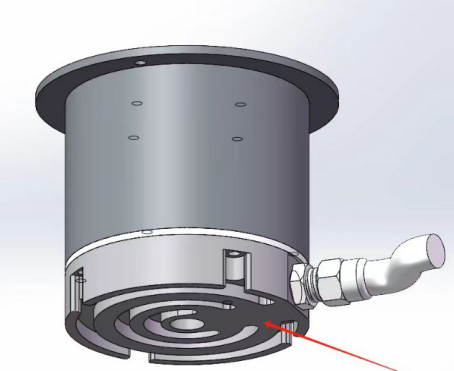Tianyi Sensor IOT Technology Co., Ltd
Sales Manager:Ms. Emily Wang
Cel,Whatsapp,Wechat:+86 15898932201
Email:info@fengtutec.com
Add:No. 155 Optoelectronic Industry Accelerator, Gaoxin District, Weifang, Shandong, China

Sales Manager:Ms. Emily Wang
Cel,Whatsapp,Wechat:+86 15898932201
Email:info@fengtutec.com
Add:No. 155 Optoelectronic Industry Accelerator, Gaoxin District, Weifang, Shandong, China

Model:FT-JB2H
Brand:tianyi
1.Road Ice Sensor product introduction
Road Ice Sensor effectively protects roads for detecting harmful road conditions such as ice, snow and water to prevent the invisible threat of ice.In winter, rainy and snowy weather, the roads are prone to freezing, causing various potential risks for pedestrians and even causing personal injury accidents.Therefore, it is necessary to conduct ice accumulation inspections on some important road sections.The road maintenance department can be reminded to take timely measures to avoid the occurrence of harsh accidents.The ice accumulation detection sensors produced by our company use microwave electrical signal detection technology, with temperature detection and compensation functions, and are installed in a suitable road section, which can detect state data such as water accumulation, water spray, icing and icing thickness in real time.
The sensor has a simple structure and is easy to install.It has an RS485 communication interface.It can be communicated with ModbusRTU protocol or can be set to send data regularly to meet the diverse needs of users in communication.
2.Main technical indicators of Road Ice Sensor
(1) Detection resolution: 0.1mm
(2) Ice range: 0~10.00mm
(3) Measurement accuracy: 0.1mm
(4) Detection status: dry, rain, accumulated water, ice, frozen rain, frozen, melted
(5) Communication method: RS485
(6) Working voltage: 5VDC
(7) Working temperature: -40℃~85℃
(8)Power: <0.5W
(9) Protection level: IP67
3.Main features of Road Ice Sensor
(1) Can detect various states such as ice accumulation thickness, rainfall, and water accumulation.
(2) Has a temperature detection sensor.
(3) The measurement data can be transmitted actively at regular intervals.
(4) Each device has a unique number and must be equipped with this number during communication.It is suitable for building a large-scale monitoring system.
4.Scope of application of Road Ice Sensor
Cooling towers, communication towers, power towers, bridges, marine platforms and road surfaces, etc.equipment or buildings that need to detect icing.
5.Road Ice Sensor structure dimension diagram

6.Road Ice Sensor installation method
1.Install it in a position where icy needs to be detected, and the surface detection antenna is barely leaking near the freezing point.
2.Pay attention to protecting the detection antenna part during installation to prevent bumps.
7.Road Ice Sensor wiring
This sensor provides about 3 or so 8 core wiring, and the wiring method is as follows:
| Line color | describe |
| red | 5V+ power supply power ≥0.5W |
| black | 5V-Power Power Supply |
| blue | RS485-A Communication |
| Brown | RS485-B Communication |
| Yellow, green | 12V+ (select one of them when wiring) |
| gray | 12V-(Please choose one of them when wiring) |
8.Road Ice Sensor communication function
1.Use the RS485 bus structure, the baud rate of the serial port is 9600, the data bit 8, the stop bit 1, and the parity bit is none.
2.Communication data list
(1) Real-time data register address table (function code 03), each data has two bytes, the data is low during transmission
Bit bytes are in front and high bytes are in back
Register address description data type unit
0 Temperature INT16 0.1℃
1 Weather status UINT16 0-Dry
1-Ice
2-Rain
3-Accumulated water
4-Melting
5-Ice
2 Ice Thick UINT16 0.01mm
3-15 Reserve UINT16
9.Pay attention to using Road Ice Sensor
(1) Users should check the surface before the icing season comes to prevent it from being covered with large pieces of debris.
(2) Wait for 3 minutes after each power-on before entering the normal measurement state.
In the field of meteorological monitoring, TianYi has launched a series of Handheld Weather Stations, among which the FT-SQ5 model has attracted much attention. It integrates the monitoring functions of multiple key meteorological elements. With high-precision sensors and intelligent chips, it can a...
In the agricultural field, the traditional extensive irrigation method relying on experience is likely to cause either water resource waste or insufficient irrigation. With the rise of precision agriculture, different crops have varying requirements for soil temperature and humidity at different gro...
Wind speed and direction are important parameters in meteorological observation and environmental monitoring, and they play a significant role in many fields such as agricultural production, aerospace, and energy development. Accurate wind speed and direction data can provide strong support for disa...
Ultrasonic resonance anemometry is a commonly used meteorological observation technology. Its principle is to utilize the propagation characteristics of ultrasonic waves in the air to measure wind speed and wind direction. When sound waves propagate in the air, their speed will be affected by the wi...